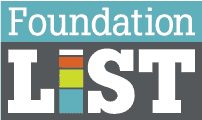Nonprofit Development Trends in Hiring and Recruitment.
This is year, more than we have ever seen before, is the time to switch from corporate employment to working at a nonprofit if you are considering to do so. It used to be that no one could simply slide over and start working at a nonprofit, even if you had been working at the most sought after for-profit corporations. Prior volunteer or nonprofit experience was required.
The landscape is changing. Over the past years, executive recruiters and nonprofit human resources professionals have seen more cross-over candidates from the for-profit sector become successful candidates and land new not-for-profit jobs than ever before. We interviewed nonprofit HR leaders on this topic and there is a growing consensus that the needle has moved. There is a increasing willingness to hire out of the corporate sector compared to the years past. Further, significantly more corporate cross-over candidates are expected in 2022-2025 to keep up with the growing nonprofit job growth. The demand for more services and programs that help communities in need is increasing. This strong job creation growth and US workers becoming more interested in mission-driven work has further increased this trend.
Now, don’t get too excited. Not all positions are wide open without similar experience. For example to make a big switch into a nonprofit executive leadership CEO position, we would advise candidates seek volunteer experience and gain significant board leadership experience if you are new to the sector. Plus you will need a proven track record of success leading an entity of a similar size and a true passion for the mission. But, doors have been opening for some of the other departments within development, marketing, operations, finance and human resources. The need for technology innovation, finding marketing, technology and operations expertise to implement online development and program plans has driven nonprofit employers to seek to hire more for-profit experienced candidates than ever before.
There is also a compelling need for many organizations with aging and declining donor bases to modernize their fundraising, programs and operations. Baby boomers are the most wealthy generation in the history of the United States at the age of retirement today. They hold 53.2%, or $59.96 trillion of US wealth. They also make up more than 76.4 million Americans and considerable philanthropy potential. At the same time they are exiting out of the job market with increasing speed, and are a decreasing demographic. This has pushed many organizations dependent on baby boomer support seeking new strategic pathways.
Many organizations understand the growing need to reach younger generations and stay relevant. They seek to find engagement on social media, Facebook and Instagram campaigns, and find creative answers to driving fundraising via online marketing and public relations strategies. These organizations are implementing new technology and tactics to attract a wider array of membership and supporters.
Technology is not the answer alone. Without use of proven development tactics and individual engagement some organizations are falling behind. Many nonprofit boards are seek a technological or leadership hire to fix their failing, or stagnant development numbers. If you are in one of these organizations not to forget about what made you successful in the first place. There is no replacement for amazing events, stories of hope and programmatic impact. By leveraging wise public relations and marketing you can entice the public to want to support your unique mission. But first you must know your target audience and what it takes to move them to action. Innovation is a necessity but at the same time do not forget about your past proven methods … its a dangerous lesson to forget what made us great in the first place.
“Ask yourself the secret of your success. Listen to your answer and practice it.” – Richard Bach
If you are considering changing jobs and attempting to gain your first nonprofit development role consider doing the following to best prepare yourself for success:
(1) Join a board and participate in a development committee to gain exposure.
(2) Volunteer to write a grant and gain valuable hands on experience.
(3) Take into classes at the Foundation Center to understand grant-writing and Foundations grant-making processes.
(4) Get involved in your community and he raise funds for a political campaign and find ways to gain exposure into securing major gifts and gaining corporate partners.
(5) Do not assume that your background (be it in sales, marketing, product marketing, wealth management, HR, Operations or otherwise) easily translates into philanthropic activities; to demonstrate your experience build skill sections that showcase your abilities and experience as it relates to the job you are applying for on the top of your resume.
(6) Learn about the sector; get active at nonprofit events; and become a part of the community you wish to join.
(7) Create value and provide pro-bono help in your network in the area you wish to work to gain valuable experience that will qualify you for the job you wish to land.
(8) Be mission focused and show why the specific organization you are applying for is the exact nonprofit you wish to work for.
(9) Stand out. Find a designer to make your resume, write a letter so amazing every hiring manager will marvel, and show that you are part of the sector not outside looking in.
(10) Know the nomenclature and the basics; understand the differences between nonprofits and foundation; company and organization; grant making and grant writing; why organization have shifted into using the term philanthropy over fundraising and why Philanthropy is a warmer word that can decrease the fear of fundraising.
Opportunities Are Increasing In The Nonprofit Sector
The monthly average of job growth in the nonprofit sector ranges from 4% to 5% currently. Between 2007 and 2016, nonprofit job growth outpaced for-profit employment growth by more than 12 percent. The nonprofit sector is a true economic engine for the United States with over 1,298,348 public charities with more than 12 million employees and growing! Health, education, and social services have consistently been the fastest growing job creator for the nonprofit sector. There is considerable opportunity for career employment in the sector. If you would like more information on nonprofit job seeking please read, “Nonprofit Jobs: A Check List For How To Find Work In The Nonprofit Sector.”
Or for more information on nonprofit hiring trends please see, “Nonprofit Hiring Trends and The National Nonprofit Employment Market.”


